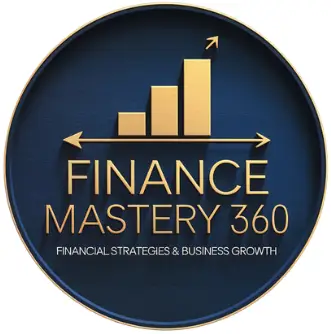The fintech landscape in the USA is rapidly evolving, with innovative technologies reshaping traditional financial services. As a financial expert with over 15 years of experience, I’ve witnessed firsthand the transformative power of these trends. In this article, we’ll explore the top fintech trends that are revolutionizing the US financial sector, offering insights that can help businesses and professionals stay ahead of the curve.
Artificial intelligence and machine learning : Revolutionizing financial services
Artificial Intelligence (AI) and Machine Learning (ML) are at the forefront of fintech innovation in the United States. These technologies are transforming various aspects of financial services, from fraud detection to personalized customer experiences. According to a recent study by Deloitte, 70% of financial services firms are using AI technologies to improve their products and services.
One of the most prominent applications of AI in fintech is the use of chatbots and robo-advisors. These AI-powered tools are revolutionizing customer service and financial advice, providing 24/7 support and personalized recommendations. For instance, major US banks have reported a 60% reduction in customer service costs since implementing AI chatbots.
AI and ML are also being leveraged for :
- Advanced data analysis and risk assessment
- Predictive modeling for investment strategies
- Automated underwriting in lending processes
- Real-time fraud detection and prevention
As these technologies continue to evolve, we can expect even more sophisticated applications in the fintech sector, further enhancing efficiency and customer experiences.
Digital payments and mobile banking : The new normal in finance
The rapid adoption of digital payments and mobile banking solutions is reshaping the US financial landscape. With the COVID-19 pandemic accelerating this trend, we’ve seen a significant shift towards contactless payments and digital wallets. In fact, a study by the Federal Reserve found that 43% of US adults used mobile banking as their primary method of account access in 2021.
This trend is not limited to traditional banks. Neobanks and digital-only banking services are gaining traction, offering streamlined services and often lower fees compared to traditional banks. These digital-first institutions are particularly appealing to younger generations, with millennials and Gen Z leading the adoption rates.
Key developments in digital payments and mobile banking include :
- Increased use of QR code payments
- Integration of biometric authentication for enhanced security
- Real-time payment systems for instant transfers
- Cross-border payment solutions leveraging blockchain technology
As a financial consultant specializing in digital transformation, I’ve observed that businesses that embrace these digital payment trends often see improved customer satisfaction and operational efficiency.

Blockchain and cryptocurrency : Disrupting traditional finance
Blockchain technology and cryptocurrencies are no longer fringe concepts in the US financial sector. They’re increasingly being adopted by mainstream institutions, offering faster, more secure, and transparent transactions. The market capitalization of cryptocurrencies reached $2 trillion in 2021, signaling growing acceptance and integration into the financial ecosystem.
Blockchain’s impact extends beyond cryptocurrencies. It’s being used to create smart contracts, which automate agreements without intermediaries, potentially revolutionizing areas such as real estate transactions and supply chain finance. Major US banks are also exploring blockchain for more efficient cross-border payments and trade finance solutions.
Here’s a breakdown of blockchain and cryptocurrency applications in fintech :
| Application | Benefits |
|---|---|
| Decentralized Finance (DeFi) | Enables peer-to-peer lending and borrowing without traditional intermediaries |
| Digital Asset Management | Provides secure, transparent ownership and transfer of digital assets |
| Supply Chain Finance | Improves traceability and reduces fraud in supply chain transactions |
| Identity Verification | Enhances security and privacy in digital identity management |
As regulatory frameworks evolve to accommodate these technologies, we can expect to see even broader adoption and integration of blockchain and cryptocurrencies in the US financial sector.
Open banking and APIs : Fostering innovation and collaboration
Open banking is rapidly gaining momentum in the United States, driven by consumer demand for more integrated and personalized financial services. This trend allows third-party providers to access financial data through APIs (Application Programming Interfaces), fostering innovation and collaboration within the fintech ecosystem.
The impact of open banking is significant. It’s enabling the development of new financial products and services that offer enhanced value to consumers. For instance, personal finance management apps can now aggregate data from multiple bank accounts, providing users with a holistic view of their financial health.
Key benefits of open banking and APIs include :
- Improved customer experience through seamless integration of services
- Enhanced financial transparency and control for consumers
- Increased competition and innovation in financial services
- More efficient loan underwriting processes through access to comprehensive financial data
As a CFA with a focus on financial technology, I’ve observed that financial institutions embracing open banking are better positioned to meet evolving customer expectations and compete in the digital age.
Emerging trends shaping the future of US fintech
Looking ahead, several emerging trends are poised to further transform the US fintech landscape. These innovations promise to reshape how consumers and businesses interact with financial services, offering new opportunities and challenges for industry players.
One significant trend is the rise of embedded finance, which integrates financial services into non-financial platforms and apps. This allows businesses to offer banking services without becoming a bank, potentially disrupting traditional financial models.
Other noteworthy trends include :
- Regulatory Technology (RegTech) solutions for improved compliance
- Sustainable and green finance initiatives leveraging technology
- Voice-activated banking for enhanced accessibility
- Quantum computing applications in financial modeling and cybersecurity
As these trends evolve, they will likely create new opportunities for innovation and collaboration within the fintech ecosystem. Businesses and professionals who stay informed and adaptable will be best positioned to thrive in this dynamic environment.




